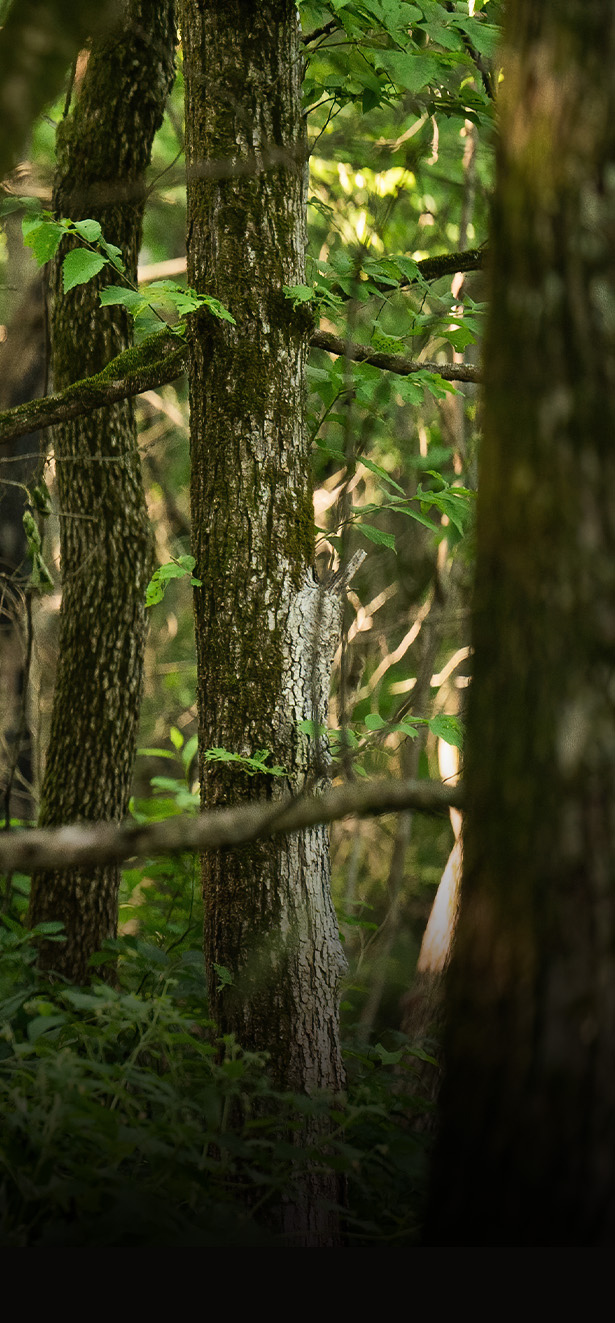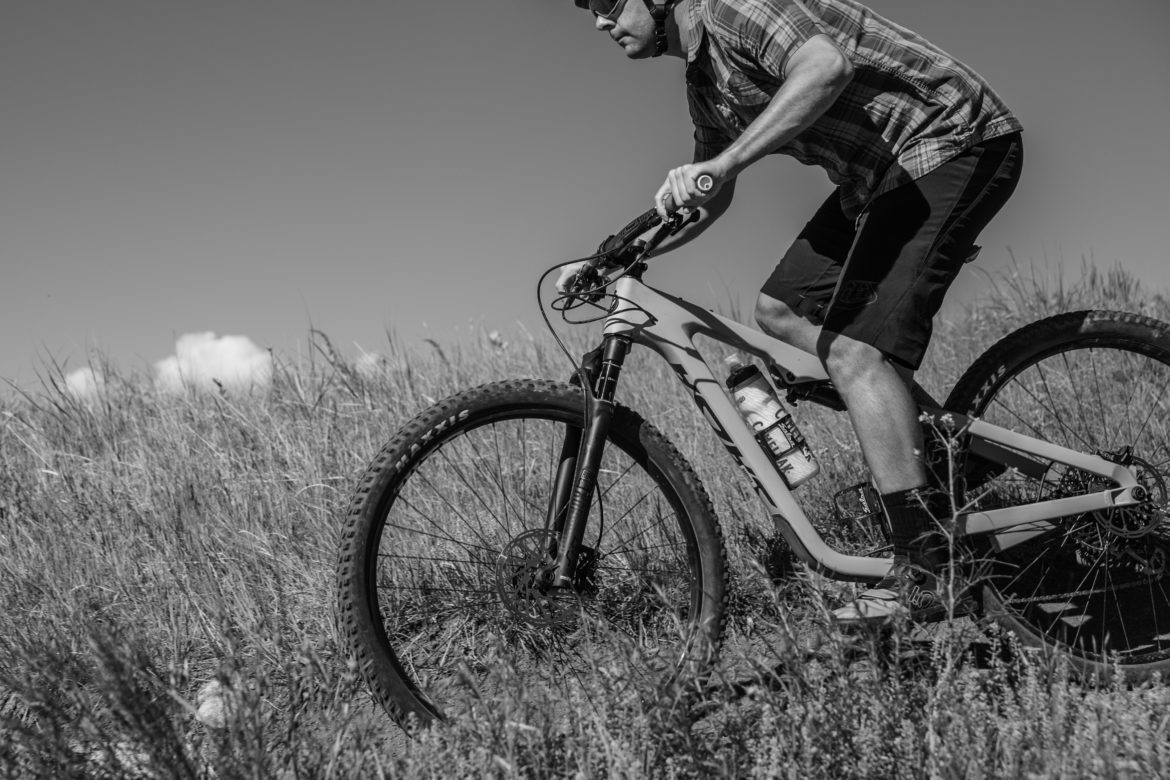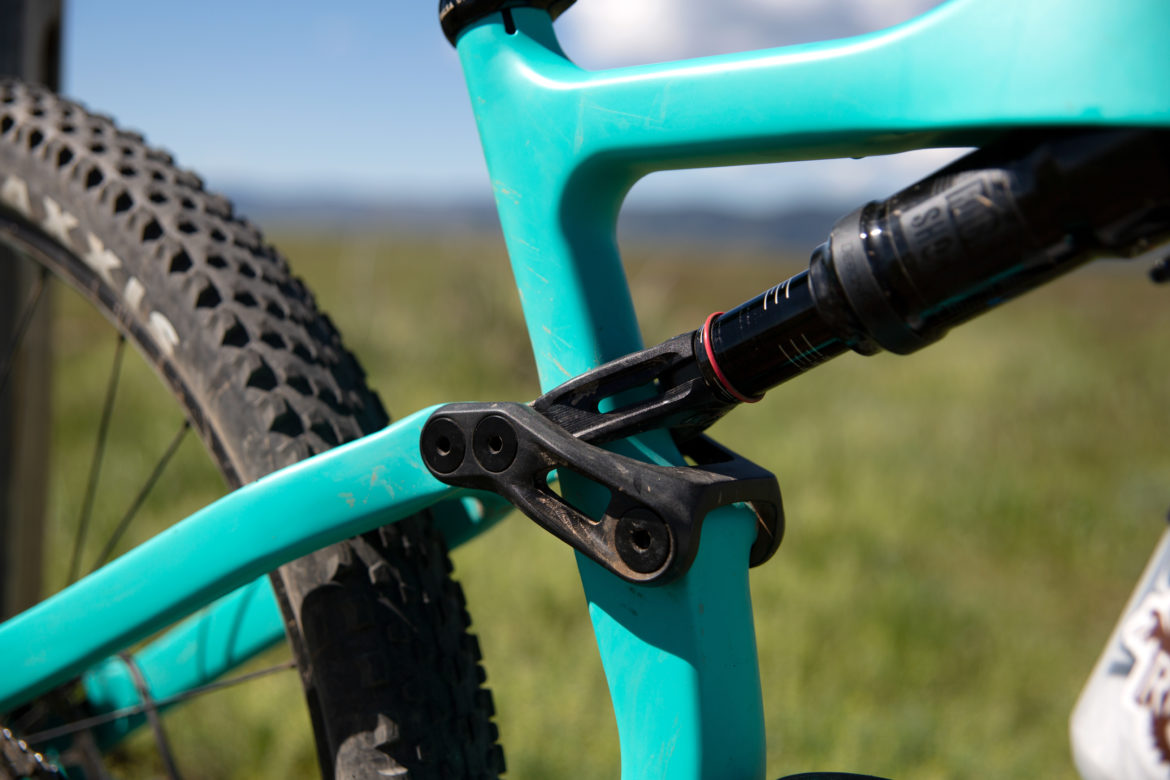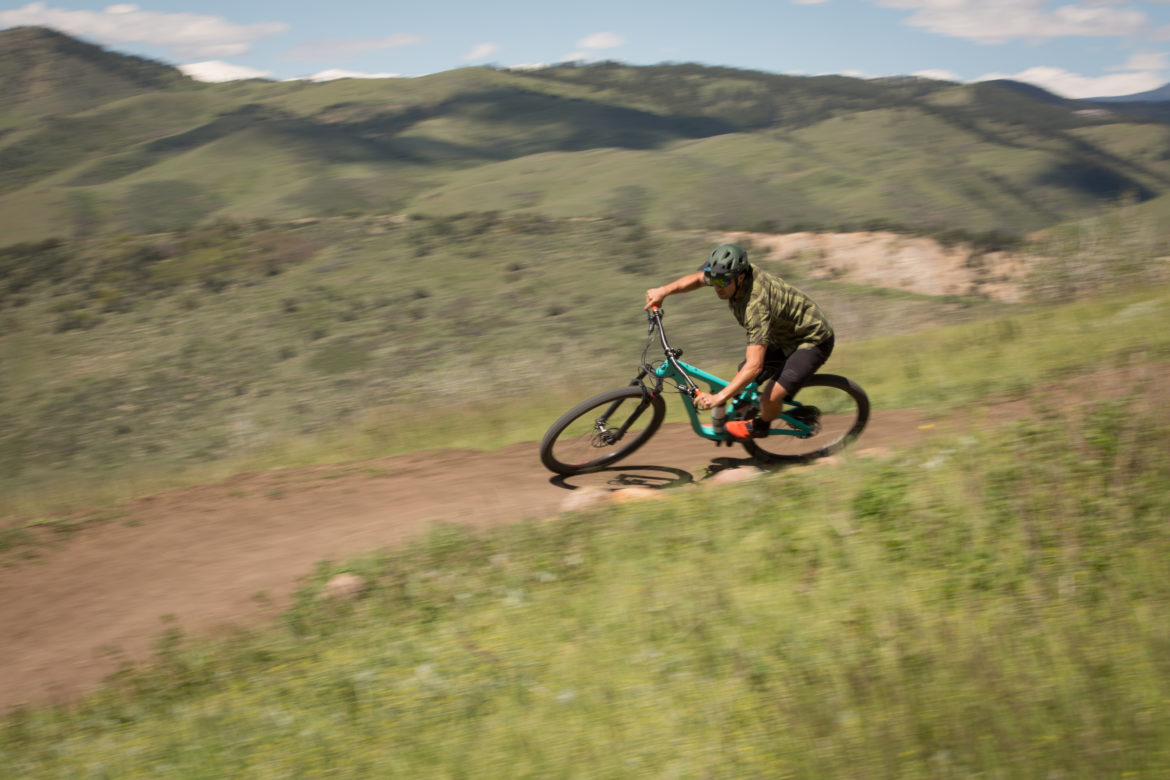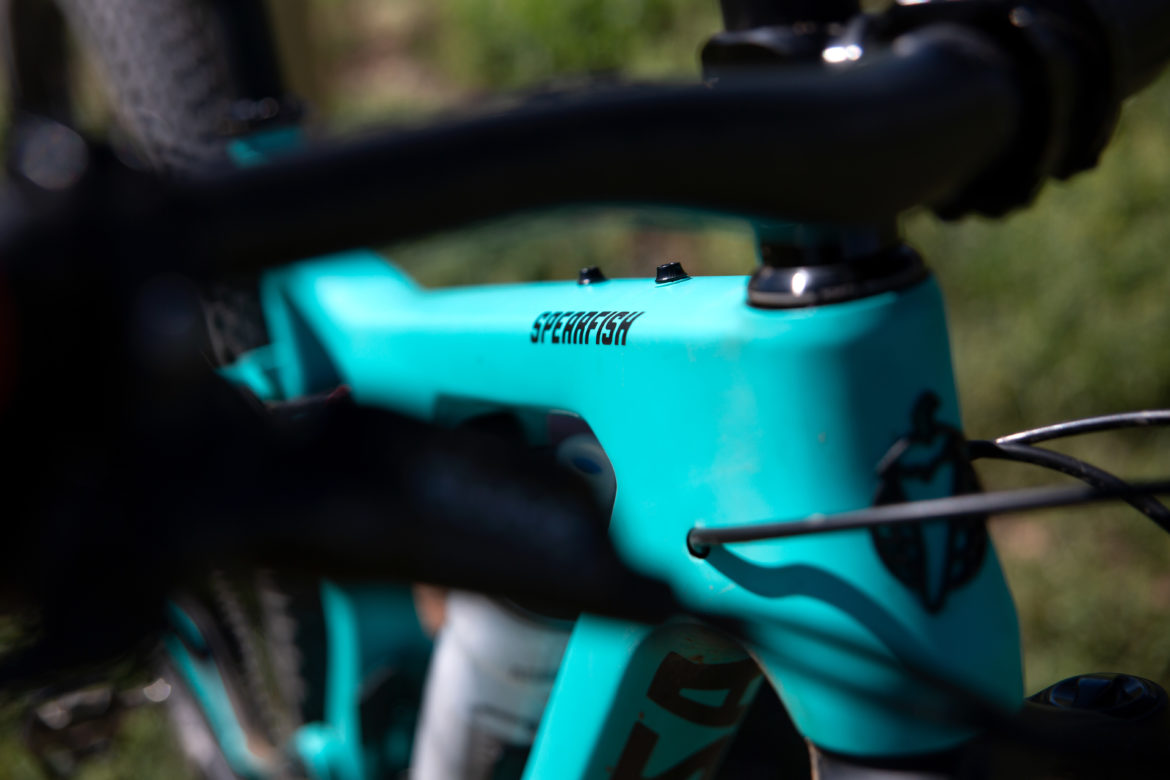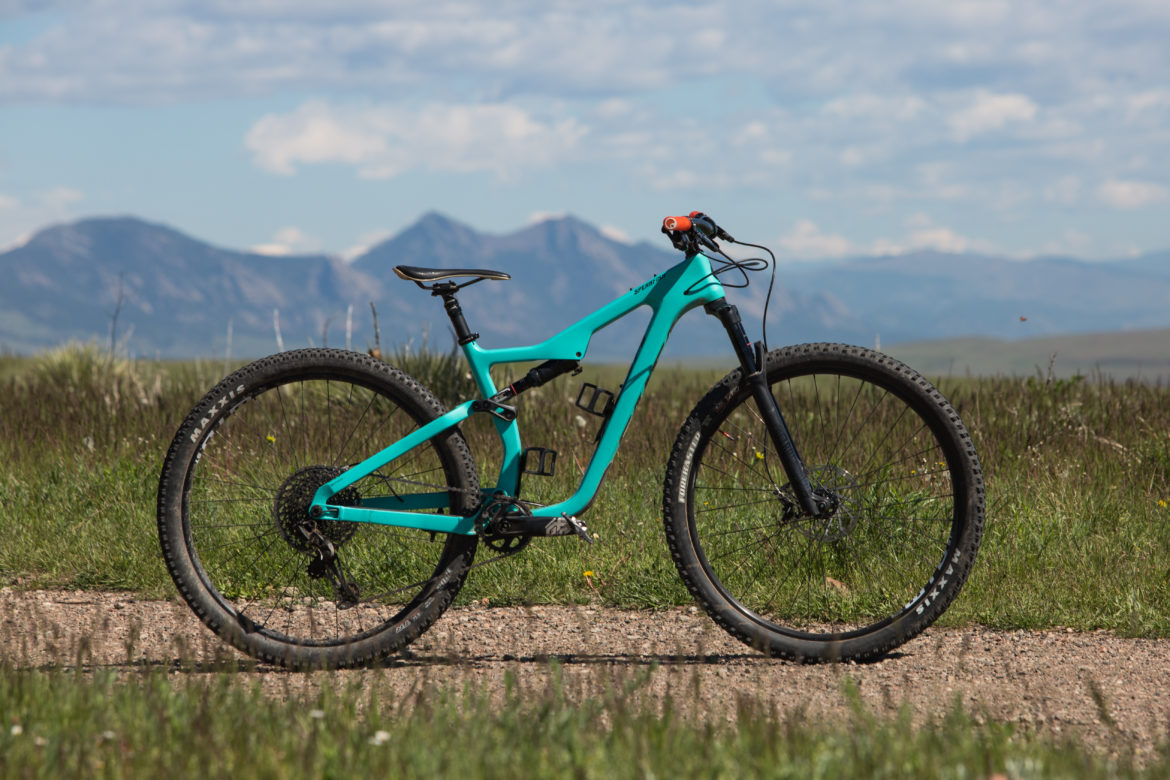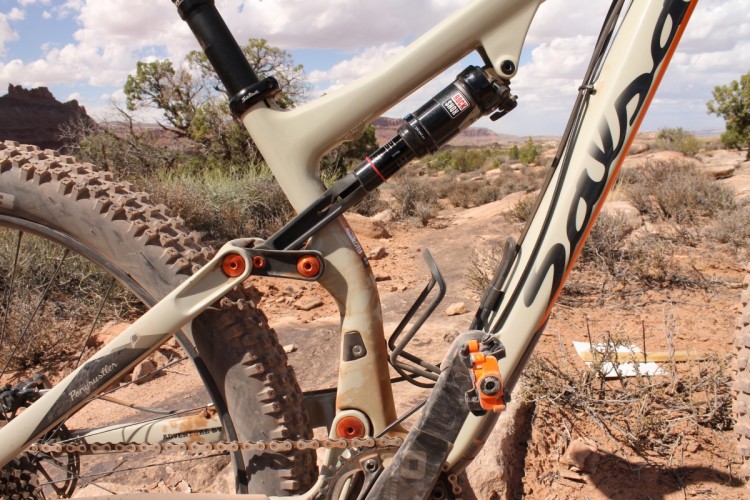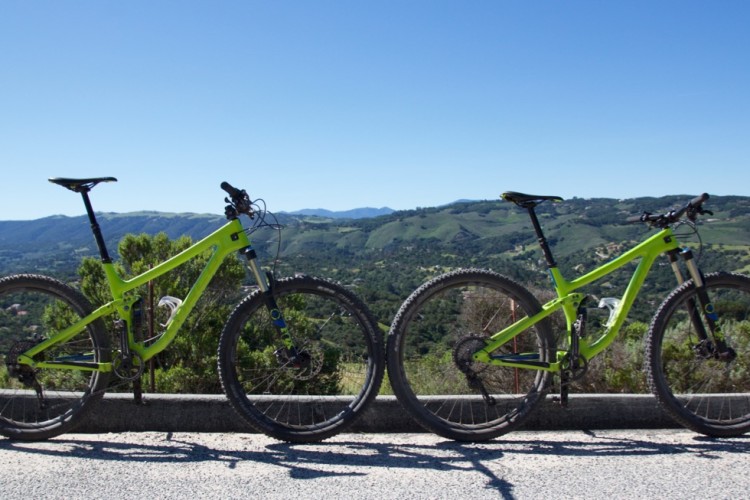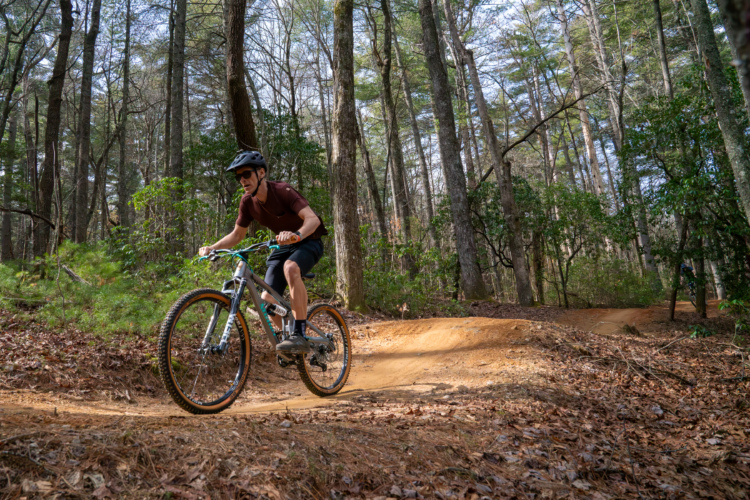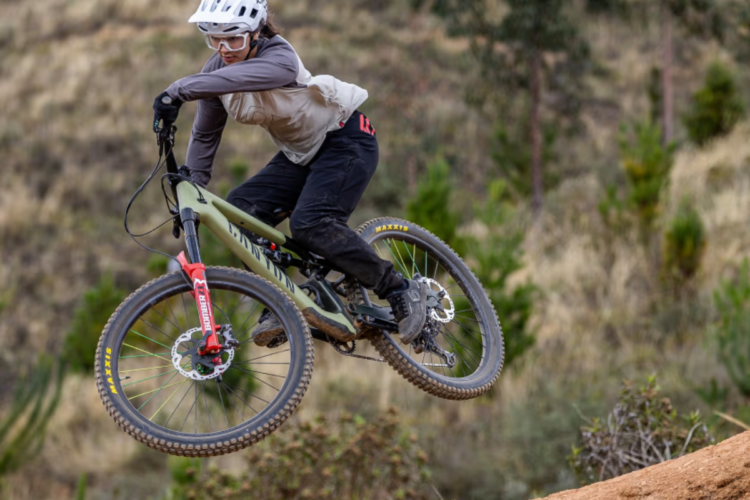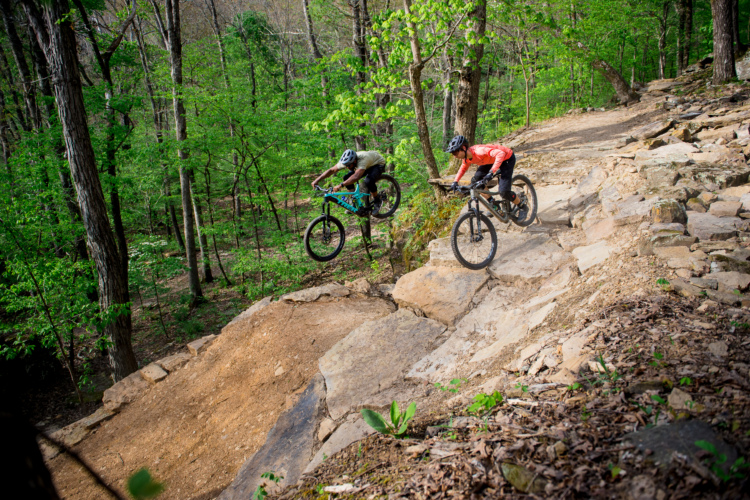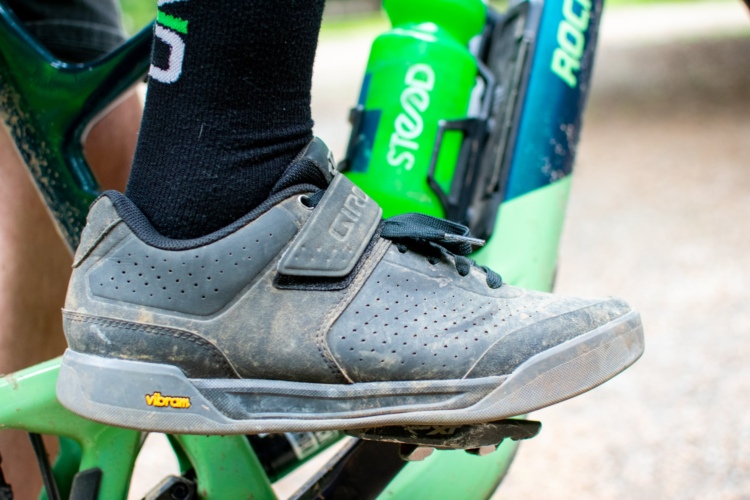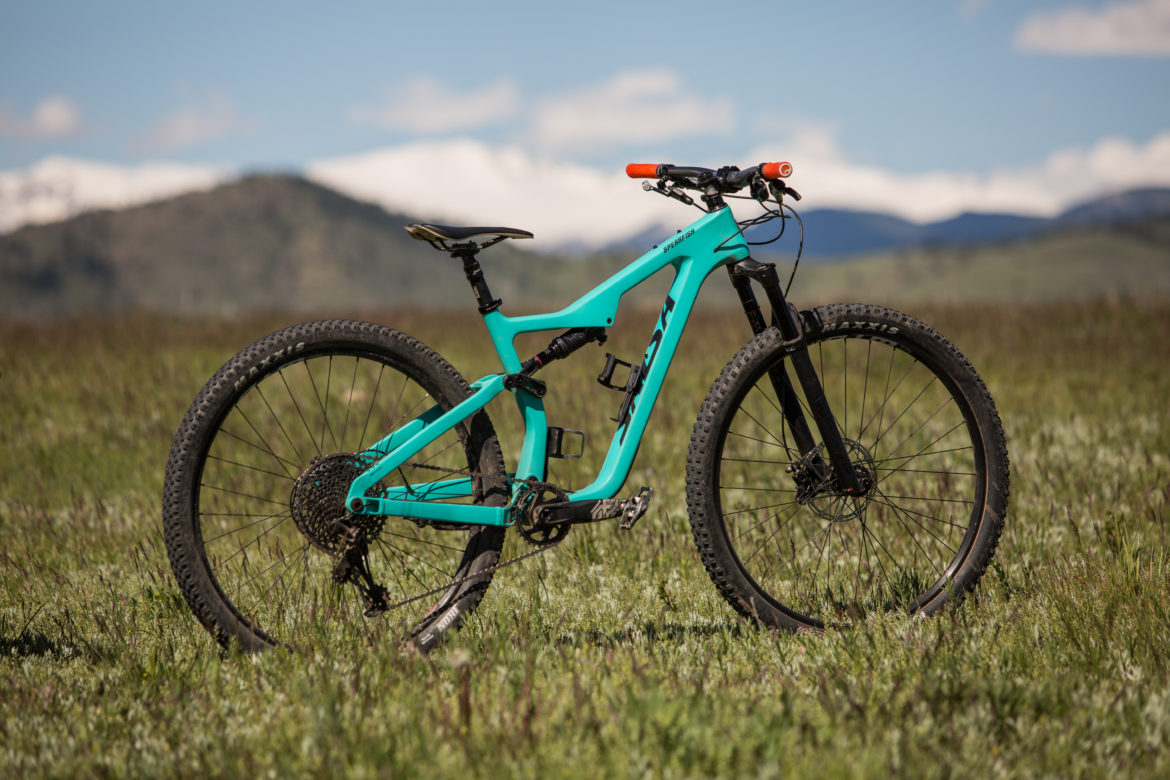
There’s a new era of cross-country bikes out now that climb better than ever and descend in the same manner. Most of the media say it’s because cross-country courses “are more technical than ever,” but after talking with a few pros last year, I’m not sure that’s entirely the case.
Salsa could probably care less about what World Cup courses look like, and for the vast majority of us, do we honestly care? Personally, I love watching World Cup XC, but I’m not going to choose a bike based on what courses the top 1% of athletes in our sport ride. There’s no denying a trickle-down effect of athlete feedback and engineer development, but really, in any category (except downhill) a bike should be reasonably fun on both climbs and descents.
For that matter, Salsa seems to have nailed its new lineup, especially with the Spearfish.
Specs
- 100mm rear travel with 120mm fork
- 29-inch wheel size x 2.2-2.6″ (compatible with 27.5×2.8-3.0″)
- Carbon front triangle, aluminum rear triangle
- Split-Pivot rear suspension
- 74.3° STA, 67.8° HTA
- Pricing starts at $2400 for Deore build with an alloy frame
- Size medium tested, MSRP: $5,200
- Weight: 27.8lbs (M, w/o pedals)
About the Spearfish

Salsa redesigned the Spearfish for 2019 with some major changes. The Split Pivot platform was updated and tuned with a new leverage rate, and the frame has Flip Chip adjustability and a metric shock standard. Kinematics and anti-squat were revised, improved, and optimized around a 32-tooth chainring. The frame doesn’t accept a ring larger than a 32-tooth, and oval rings can’t be greater than a 30-tooth. Salsa claims that with a 32-tooth ring, there is a more efficient pedaling platform without having to overdamp the rear shock.

The leverage rate is more progressive than the previous version, with better bottom out resistance, but the rest of the leverage rate is similar to the last as far as small bump compliance and mid-stroke support.
Salsa spread out the axle to a SuperBoost 157mm, which is something you won’t see a lot of on other short travel mountain bikes.
The frame consists of a carbon front triangle, with an aluminum rear. It features a low top tube for optimal standover height, has accessory mounts on the top tube, and can fit two full-size water bottles inside the frame. Riding with a pack is the last thing on your mind with the Spearfish.

Salsa is one of the last brands that I associate with competitive racing, but the Spearfish does have some XC racing in its blood, just not the kind of XC race that’s carved into the side of a neighborhood hill; its functionality suits long distance competition. The 100mm of rear wheel travel is paired with a 120mm Rock Shox SID, World Cup capable fork.

Salsa specs out their build kits a little differently than other brands as well, with several, carbon-oozing premium priced bikes starting their build kits where Salsa finishes. The top-shelf Spearfish build that I tested is built with a SRAM GX Eagle 12-speed drivetrain and Guide R brakes. This is all fine and functional equipment, but far from Gucci. The WTB ST i25 wheels with Speedterra hubs are fairly budget-minded also, as is the OEM cockpit.
It isn’t a flashy build kit, but that doesn’t take away from the bike’s eye-grabbing color or design, and it sells for $5,200.
On the trail
At 5’8”, I was on the fence with a size small on one side and a medium on the other, but with the small’s reach size at 423mm, it made sense for me to size up to the medium. With a 442mm reach, saddling up on the Spearfish felt roomy at first, but it didn’t take me long to get comfortable.
I set the sag at a recommended 30% and pedaled out. A 612mm stack height on the medium puts riders in a very upright pedaling position and the progressive suspension keeps the rider in that position without settling into the stroke.
The anti-squat on the Spearfish’s suspension is nice and tight. In pedal mode on the RockShox Deluxe RT3, it keeps you right around the 30% sag mark. The suspension softens up a little bit with the shock open, but there isn’t much of a penalty with the shock lever flicked to the left. I’m pretty uptight about keeping the bike in pedal mode for a more damped suspension on the climbs, but for those who want to forget about switching levers, not to worry, the Spearfish feels very solid with the lever in open.
The geometry on the Spearfish suits climbing well. A 74.3-degree seat angle compliments the progressiveness of the bike without it being too steep and feeling like a townie on the climbs.
Traction is the name of the game with Split-Pivot and the tires feel like Velcro climbing up loose and bumpy terrain. On the flats, it’s irresistible to push into the pedals and stand and sprint on the short-travel 29er to carry the endless momentum that the bike builds.
What really sold me on the Split-Pivot suspension is the bike’s ability to carve any corner like a NASCAR driver with all-terrain tires on a rubber track. The benefit of the Split-Pivot platform is a concentric rear axle pivot that separates braking forces from the rear suspension, so even if you’re on the brakes in a bumpy corner, the wheel doesn’t lock up — it sticks to the ground.
Cornering is part of the reason why the Spearfish is so much fun to descend on. When an onlooking rider asks if your handlebars touched the grass around a swooping corner, it makes you feel pretty dang good.
The Spearfish’s eagerness to go airborne like a fish out of water has changed any leftover preconception that 29ers don’t jump well. With solid mid-stroke support, it ramps up nicely to pop off rocks, jumps, and fat roots.
The RockShox SID stanchions are only 32mm in diameter, and the Spearfish can still charge through rock gardens without too much flex, although I wonder what would be possible with a 120mm Pike on the front end to add a touch more stiffness.
Components and inside info on the new Spearfish
With the Spearfish’s impeccable performance, there were a few interesting build kit notes I jotted over my review period and components that confused my sense of categorization. Is it a trail bike? Cross-country? Does it matter?
Up top, the contact points start with an uber-wide set of 800mm handlebars and a stout 50mm stem. I’m all for short stems, but don’t enjoy 800mm wide bars anymore, so I swapped for a narrower set of 780 RaceFace Next R carbon bars I had lying around (and which the bike is pictured with in a few shots). I suppose it’s easier to start wide and cut rather than narrow and having to buy another set.
I don’t think that the SID fork held the Spearfish back at all, but since it’s already a line-blurring bike, I do wonder how the front end would’ve felt with a Pike. The SID RLC feels very solid though, and plenty stiff considering it’s a thoroughbred XC fork with plentiful small bump compliance. Salsa says that they wanted to differentiate the build kits between the Spearfish and Horsethief, which does come with a Pike. “We do encourage folks to build beyond the spec if they want!” says Salsa.
The flip-chip on the new Spearfish only offers a 0.2-degree change. The bike came in the low-position and I left it there since it didn’t seem necessary to try the high position. I didn’t experience pedal strikes and the seat angle is plenty steep. Salsa says that it can be changed for rider preference, bottom bracket position, or to accommodate the change to 27.5-inch wheels.
Buyers considering the Spearfish may be disappointed to hear that the bike is now a SuperBoost 157 hub, and it can only (optimally) run a 32-tooth front chain ring. I asked Salsa about both.
First, the decision to build it around a 32-tooth, and eliminate options for a 34-tooth:
“The math [of the gearing]… 90 RPM at 32 x 10 on a 29×2.5 wheel results in over 25mph of speed, which we’ve found to be plenty fast for most singletrack situations. We found that even with the ability to run a 34T chainring, we get the best overall use of their drivetrain between 30 and 32t rings. Designing for 34t would cut into tire clearance and/or chainstay length, and we considered those to be more important than the ability to run a 34 or 36t.”
Short 433mm chainstays were another primary reason to switch to SuperBoost 157. Salsa says that “157 is the best solution to maximize a modern 29er. You get the shortest stays possible with the largest tire size and mud clearance, along with appropriately large chainrings, and added wheel stiffness from the additional bracing angle in the hub.”
Again, with these measurements, the Spearfish can run 29er tires up to a 2.6-inch width in the frame and a 2.8-inch in the fork, or 27.5-plus tires up to a 3.0-inch width.
Is the Spearfish a good value?
The other interesting thing about the Spearfish and Salsas in general, is that the build kits stop where many other brands start. The $5,200 build I tested has a SRAM GX Eagle drivetrain, Guide R brakes, a Salsa OEM cockpit, and WTB wheels. It’s the top level build, and although the components would be considered “entry level” on other brands, I found it to be excellent.
At $5,600 the Race build of the full carbon Pivot Mach 4 SL I tested last month gets a few nicer touches like a SRAM X01 derailleur, and a Fox Step Cast 34 fork, although it costs $400 more than the Salsa.
A GX-specced Yeti SB100 has a full carbon frame also, and a Fox 34 Performance Step Cast, but otherwise a pretty similar build for $5,000. The Yeti also weighs a half pound more according to the SB100’s listed weight. Probably, buyers have already made a decision on the Yeti or Salsa based on branding and image between the two.
The value is absolutely there, and the price falls in line with how other brands price their GX-level builds. Salsa is going to attract a different type of buyer than Yeti or Pivot, and the functionality of the frame with plenty of mounts for water, or bags, or anything appeals to the adventurous more so than the racy.
Final word
Bikes like the Spearfish lead the new generation of cross-country. It’s an outstanding climber with traction for days and feels more capable than an XC bike should feel. Most importantly, it’s more fun than I thought a 100mm travel 29er could be and for me, it’s flipped what the category is supposed to mean on its head.








